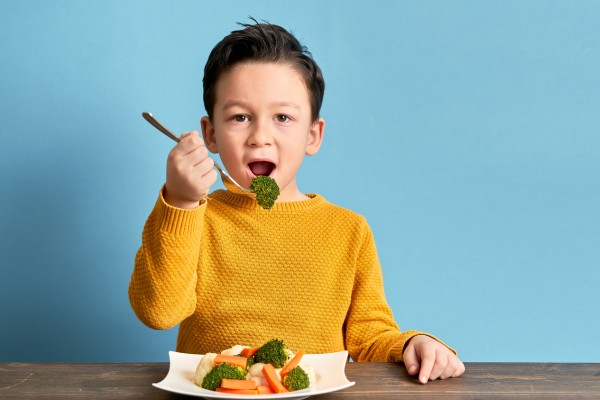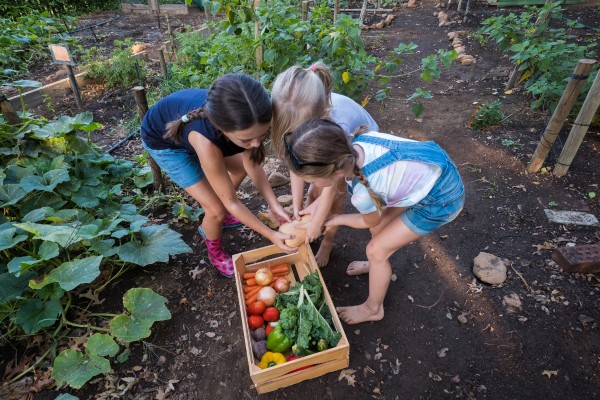
The Importance of Health and Nutrition for Kids
Did you know that it is estimated that around 10% of children in their first year of school in England are obese?
With childhood obesity becoming a real global concern, the time for parents to lay the groundwork to encourage a fit and healthy lifestyle for kids is now.
Teaching children from a young age that being active and eating well has many benefits as well as being enjoyable and empowering.
How to Teach Children about Health and Fitness

The best way for parents to support their children is to help them understand the reason they should want to be fit and healthy. You can try discussing the benefits of keeping active with your child, for example, it will build strong bones and muscles and can give them an energy boost.
Learning about their own bodies and how not being active could affect them is also an enjoyable project to research. Ask them to think about what makes their favourite athlete so great – are their legs super strong and fast? Can they jump really high? Being fit and healthy is important and so is consistently being active; marathon runners don’t just get up one day and decide to run.
Encouraging Healthy Eating

We all know how hard it is to get children to eat their fruits and vegetables! So changing children’s eating habits will require some consistency and persistence from parents, but it is achievable.
If slowly introducing fruit and vegetables into meals doesn’t work at first, don’t lose hope, It may take longer than a fortnight for them to adapt to it, but if that doesn’t work, you can try your hand at ‘hiding’ vegetables in your children’s food.
However, Children should be aware of what they are eating and learn to make informed, healthy choices so that they continue to do so as they get older. In order to do this children will need food education, both at home and at school.
A shocking study by the British Nutrition Foundation (2022) revealed that almost a quarter of UK primary school children thought that chicken counted towards your 5 a day, and nearly a fifth thought that cheese counted towards their 5 a day.
A simple way of teaching children where food comes from is to grow some fruit and vegetables in your garden.

You don’t need a lot of space – salad leaves and herbs can be grown in window boxes, tomatoes in hanging baskets, strawberries in pots and beans in grow bags. Or you could visit a local Pick–Your–Own farm; children like eating the fruits of their labour and often eat things that they wouldn’t normally consider if they have grown or picked them.
As well as getting children involved in growing their own fruits and vegetables, it can also help to involve them in the preparation and cooking process. Children love cleaning and chopping and they tend to be more willing to try new foods if they have prepared them. There are lots of simple recipes out there that are perfect for children to make, like fruit/ vegetable kebabs, pitta bread pizzas, mini vegetable egg muffins or wraps. Of course, children should always be supervised when using ovens, hobs and sharp utensils.
Most importantly, make sure the adults in the family are leading by example. It’s good to let your child see you making good food choices and enjoying healthy foods, as well as sharing a treat on occasion. Eating around the table will make your meals enjoyable on social occasions.
Other great ways to teach your child why they should eat a range of foods, also include:
- Letting them help choose the menu for the week ahead, giving choices and alternatives to anything, particularly unhealthy and listening to their input to make them feel they are valued
- Take a look at the labels on the foods you buy – do they know what all the ingredients are? There’s often a lot of ‘hidden’ salt and sugar in foods, and older children might find it an eye-opener to learn about some unknown ingredients in their everyday foods
- Showing your child good portion sizes and teaching them about moderation. Smaller plates help give the impression that a small meal is larger. Try serving your child small portions and let them ask for more if they are hungry; this is a good habit to get into as it can help to control over-eating as they grow up
How can Superheroes Teach Children about Health and Fitness?

Most children will go through a superhero phase, where they want to wear a cape while charging around and battling villains. Although some parents aren’t fans of this type of play, it offers a great opportunity to introduce your child to the effects of fitness and healthy eating.
Children look up to superheroes and want to be like them, so ask your child what their favourite superhero is like – they are often strong, fast, etc., so this can be used to suggest active play. Activity is easily brought into imaginative superhero play; for example, you could set up an obstacle course they need to get through to save their sidekick.
You can discuss healthy eating with your child by thinking about what superheroes might eat – fruit and veg give them all the energy they need to fight crime!
However, you encourage your children to be fit and healthy, make sure they understand why it is a good idea. Let them make better choices for themselves and take control of this aspect of their life. See our article on learning about nutrition and physical wellbeing for more advice and ideas.


